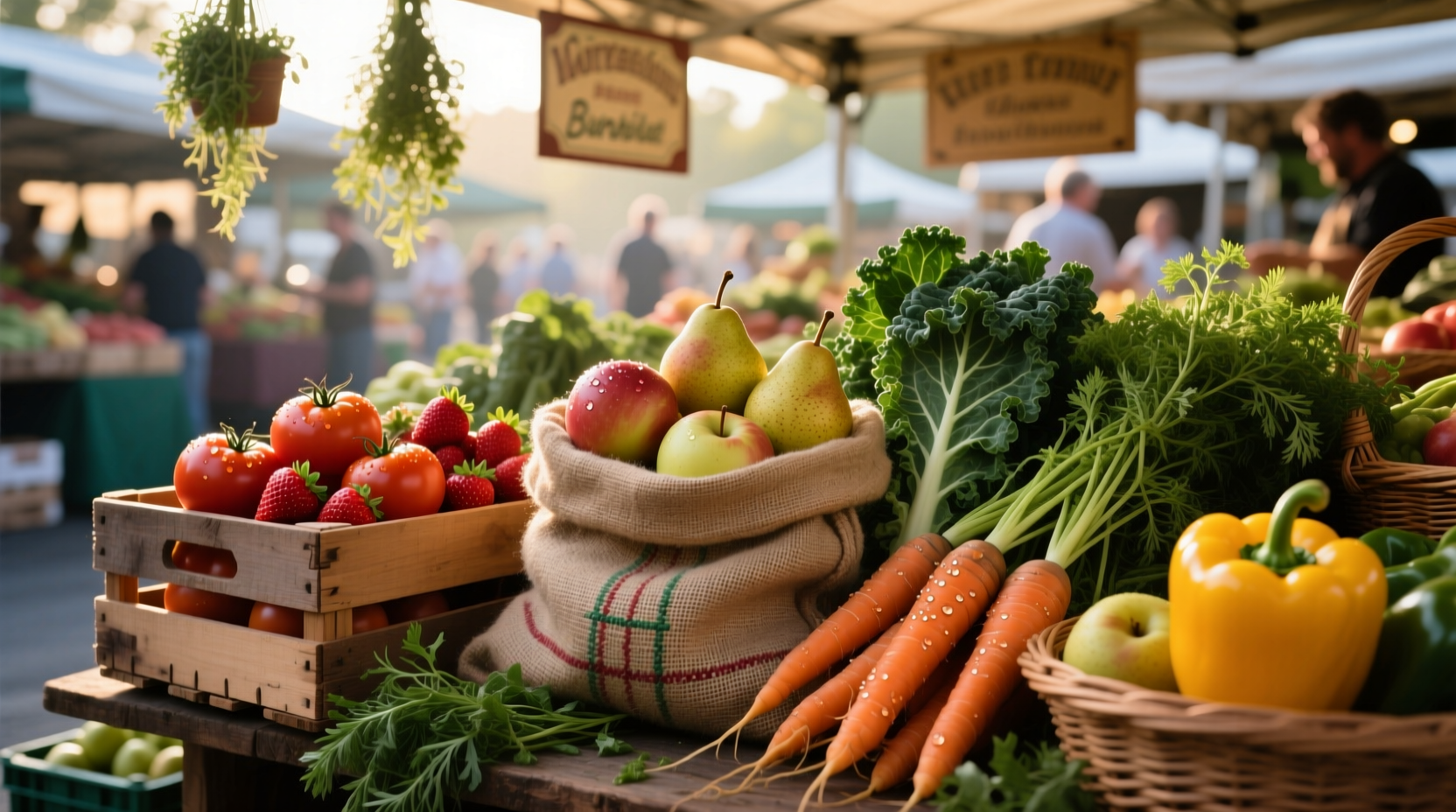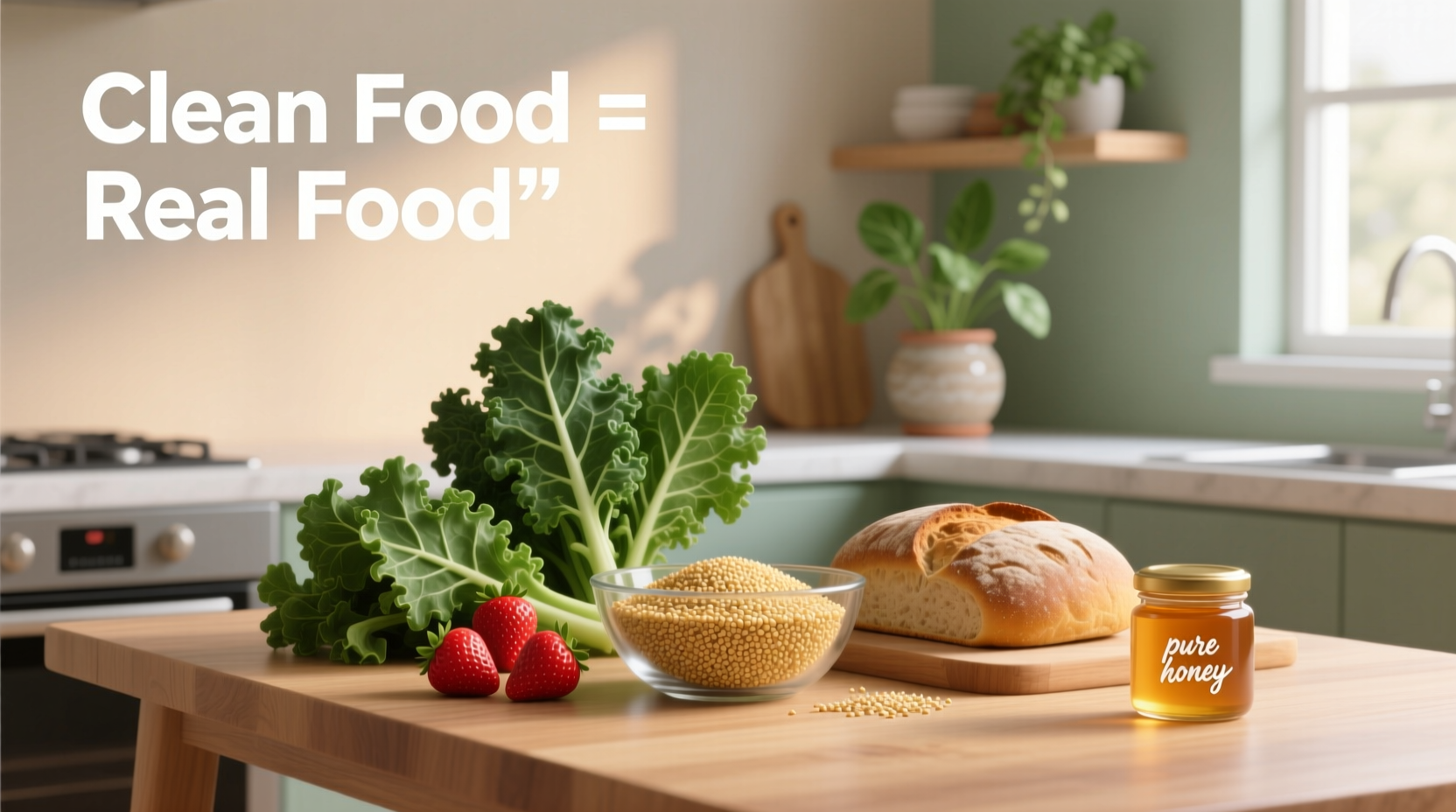Clean eating isn’t about restrictive diets or expensive superfoods. It’s a practical approach to nourishment that helps you build sustainable habits without gimmicks. By the end of this guide, you’ll confidently identify truly clean food products, understand labeling pitfalls, and implement realistic strategies that fit your budget and lifestyle—all backed by nutritional science rather than marketing hype.
What Clean Food Actually Means (Beyond the Buzzword)
Despite widespread use in grocery aisles and social media, “clean food” has no legal definition from the FDA or USDA. Unlike “organic” (which requires third-party certification), “clean” is a marketing term describing foods that align with these core principles:
- Minimal processing: Closer to its natural state (e.g., frozen berries vs. sugary jam)
- No artificial additives: Free from synthetic colors, flavors, and preservatives like sodium benzoate
- Transparent sourcing: Clear information about where and how ingredients were produced
- Nutrient density: Focus on whole foods providing vitamins, minerals, and fiber
According to Harvard T.H. Chan School of Public Health research, diets emphasizing whole, minimally processed foods correlate with lower risks of chronic diseases compared to diets heavy in ultra-processed items. The key distinction lies in how much—and what kind of—processing occurs between farm and plate.
| Term | Regulated? | Key Requirements | Clean Food Alignment |
|---|---|---|---|
| Organic | Yes (USDA) | No synthetic pesticides, GMOs, or antibiotics | Often aligns, but organic cookies still contain sugar and flour |
| Natural | No | No formal definition; generally implies no artificial colors/flavors | Poor indicator—“natural” soda may contain high-fructose corn syrup |
| Clean | No | Varies by brand; typically means no artificial additives | Requires label scrutiny—check ingredient lists for hidden additives |
The Evolution of “Clean Food”: From Trend to Mainstream
Understanding the timeline of clean eating reveals why confusion persists today:
- 1970s-1980s: Whole Foods Market pioneers natural food retailing, focusing on pesticide-free produce
- 2000s: “Clean eating” enters mainstream via blogs and cookbooks emphasizing unprocessed ingredients
- 2010s: Food manufacturers co-opt the term, leading to “clean label” products with reformulated processed foods
- 2020s: Consumer demand drives transparency initiatives like the FDA’s front-of-package labeling proposal to simplify healthy choices
The shift from niche movement to marketing strategy explains why 68% of consumers feel confused by food labels, per a 2023 International Food Information Council survey. This context matters because—unlike organic certification—“clean” claims require you to verify claims through ingredient analysis.
How to Spot Truly Clean Food Products
Follow this practical framework when shopping, whether at farmers markets or supermarkets:
Step 1: Decode the Ingredient List
Flip the package and read ingredients—the shorter and more recognizable, the better. As a rule of thumb:
- 5 or fewer ingredients: Typically indicates minimal processing (e.g., canned tomatoes: tomatoes, salt, citric acid)
- Avoid these common additives: TBHQ (preservative), Yellow #5 (artificial color), carrageenan (thickener linked to digestive issues in sensitive individuals)
- Watch for “stealth sugars”: High-fructose corn syrup, cane juice crystals, maltodextrin—all add empty calories
Step 2: Evaluate Certifications Strategically
Not all labels provide equal value. Prioritize these verified marks:
- USDA Organic: Guarantees no synthetic pesticides or GMOs
- Non-GMO Project Verified: Confirms absence of genetically modified ingredients
- Food Integrity Initiative: Third-party verification for “clean label” claims
Be cautious with unverified terms like “naturally raised” or “artisan,” which lack standardized meaning. The Environmental Working Group’s Food Scores database provides independent product assessments based on ingredient safety and nutrition.
Step 3: Apply Context Boundaries
Clean food principles serve different needs in various scenarios:
- For busy families: Focus on swapping one ultra-processed item weekly (e.g., store-bought sauce for homemade)
- For budget-conscious shoppers: Prioritize frozen vegetables and bulk grains over expensive “clean” packaged snacks
- For medical conditions: Consult a registered dietitian—clean eating alone won’t address specific nutritional needs
- When traveling: Emphasize whole foods available locally rather than seeking “certified clean” products
Remember: The clean food movement shouldn’t create guilt or restriction. As registered dietitians at the Academy of Nutrition and Dietetics emphasize, flexibility matters more than perfection for long-term healthy eating patterns.

Debunking Common Clean Food Myths
Separating fact from fiction prevents costly mistakes and unnecessary stress:
Myth: “Organic automatically means clean”
Reality: Organic cookies still contain sugar and refined flour. The USDA allows certain additives in organic processed foods—always check ingredients.
Myth: “All processed foods are unhealthy”
Reality: Minimal processing like freezing or canning preserves nutrients. The concern lies with ultra-processed foods containing multiple additives and refined ingredients.
Myth: “Clean eating requires expensive specialty stores”
Reality: The most affordable clean foods—beans, lentils, seasonal produce—are staples at conventional grocery stores. Focus on perimeter shopping (produce, dairy, meat) rather than center aisles.
Building Your Clean Food Strategy
Implement these evidence-based steps without overhauling your routine:
- Start with one meal: Make breakfast your clean food focus (e.g., oatmeal with fresh fruit instead of sugary cereal)
- Master three simple swaps: Replace soda with sparkling water, white rice with quinoa, and store-bought dressing with olive oil/vinegar
- Batch-prep clean staples: Cook grains and roast vegetables weekly for quick assembly
- Join a CSA: Community Supported Agriculture programs deliver seasonal produce directly from local farms at reasonable prices
These incremental changes align with research from the American Journal of Clinical Nutrition showing that gradual dietary improvements lead to higher long-term adherence than drastic overhauls. Remember: Clean food isn’t about perfection—it’s about progress toward more transparent, nutrient-rich choices.
Frequently Asked Questions
Is clean food the same as organic?
No. Organic is a legally defined term requiring certification, while “clean” is an unregulated marketing term. Organic products follow strict production standards but can still contain multiple ingredients and processing aids. Clean food focuses on minimal processing and ingredient transparency regardless of farming methods.
Can clean eating save money?
Yes, when approached strategically. Prioritizing whole foods like beans, lentils, and seasonal produce costs less than specialty “clean” packaged products. The USDA reports that dried beans cost approximately $0.15 per serving versus $1.50 for pre-cooked varieties, demonstrating how basic clean food staples can reduce grocery expenses.
How do I eat clean on a tight schedule?
Focus on minimally processed convenience items: frozen vegetables, canned beans (low-sodium), rotisserie chicken (check labels for additives), and pre-washed greens. Registered dietitians recommend dedicating 2 hours weekly to batch-prep staples like grains and roasted vegetables, which can be assembled into meals throughout the week with minimal daily effort.
Are there health risks to “clean eating”?
When taken to extremes, clean eating can develop into orthorexia—an unhealthy obsession with “pure” eating. The Academy of Nutrition and Dietetics warns that rigid food rules may lead to nutrient deficiencies and social isolation. A balanced approach focusing on variety and flexibility aligns better with evidence-based nutrition principles.











 浙公网安备
33010002000092号
浙公网安备
33010002000092号 浙B2-20120091-4
浙B2-20120091-4